The quality of the silver and gold enamel workmanship during the Czarist era in Russia is the best that the world has ever produced. The works of Faberge are world renown, but many other silversmithing firms also flourished and their magnificent creations are very highly prized today. Most works of this kind sell in international auctions, and the really big special pieces bring astronomical prices. I am not in their price league, so I must content myself with these beautiful spoons.
Note: some imitations of these spoons are now being produced in Russia. These newer pieces are very well done in the old style and command pretty good prices, so they are not really an attempt to undermine these old pieces, but you should be aware of this factor. At the bottom of this exhibit there is a link to learn more about old Czarist silver standards.
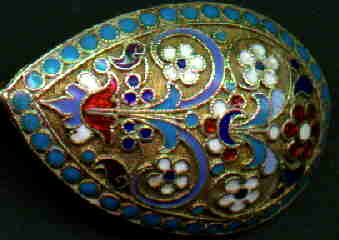

My camera just isn't good enough to capture the beauty of this beautiful cloisonne spoon from Russia. The detailed workmanship and magnificent design are highlighted by light blue and dark blue enameling with white, and red designs on a gold plated surface (ca. 1898). The colors in the picture may be changed by the camera and your monitor.
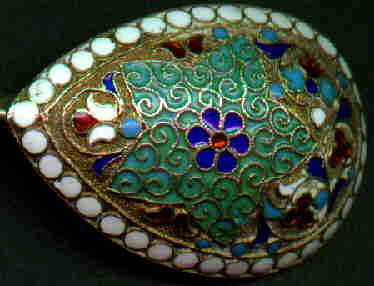
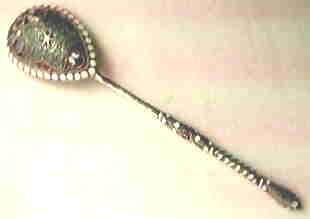
This beautiful cloisonne spoon has dark blue/green, light blue, red, white and gold enameling.
Manufactured in 1896
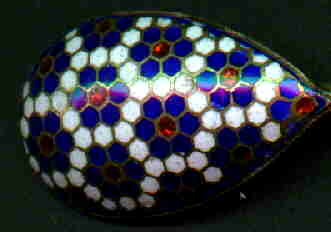

This champleve spoon has dark blue, white and red enameling.
The red enameling in the middle of the flowers is very shiny and makes it look like rubies.
Manufactured in 1889
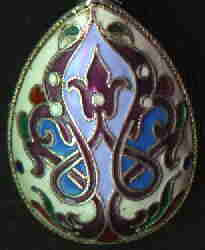

This cloissone spoon has creme, red, blue, and green enameling in a very nice art nuevo pattern.
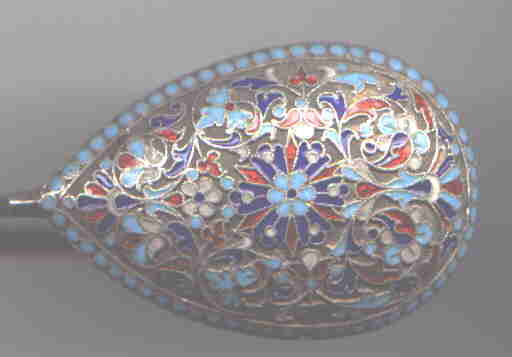

This is a much longer server spoon measuring 6.7". It was made of 84 zolotnic silver by a silversmith using either CK or GK as a mark
At this time in history, when the table was set, the spoons were turned face side down. Thus the detail work was on the back of the bowl so that guests would see the gorgeous workmanship.
Cloisonne is technically a much more difficult process. The basic spoon is created, then very small wires are soldered onto the spoon creating the cloisonnes or cells. These are then filled with enamel and fired. The process may be repeated several times until the desired effects are reached. This process is very skilled labor intensive and is seldom used today.
Champleve is a newer much simpler process that is still used today. The cells are created during the casting (or die creation) stage of production and then filled with enamel and fired. This requires much less skilled workmanship and is cheaper to produce and sell. The Communist era spoons using this enamel technique are in a separate exhibit.